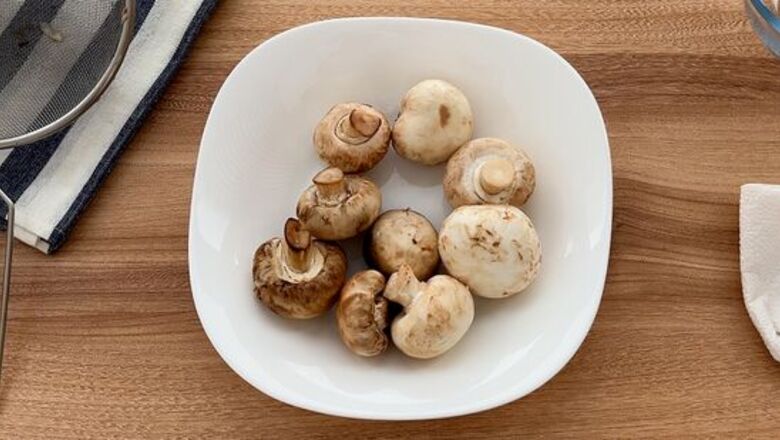
views
Freezing Steamed Mushrooms
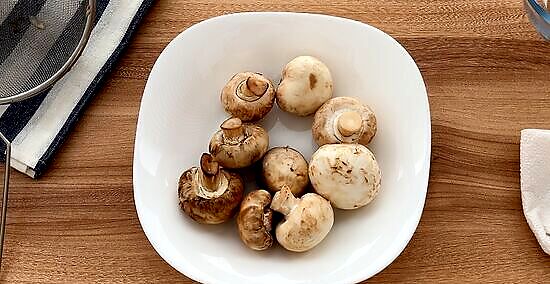
Wash the mushrooms thoroughly in cold water and pat them dry. Hold the mushrooms under cool running water and wash a few at a time, massaging away bits of dirt with your fingers. You can also place the mushrooms in a colander and rinse them all at once. Pat them dry with a paper towel. Button and cremini mushrooms are more sturdy, but be extra careful when working with lion’s mane, enoki, and oyster mushrooms—wash these varieties while they’re still attached to the larger base and then pull them off and wash them again, if necessary.
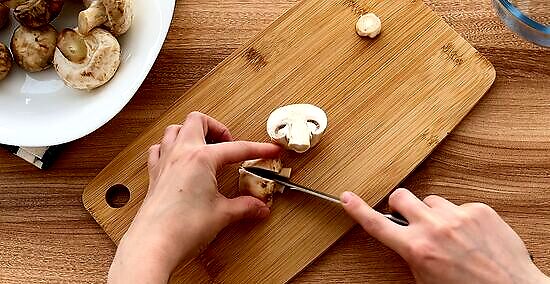
Trim off the ends of the stems and slice the mushrooms, if necessary. If the mushrooms are larger than 1 inch (2.5 cm) across, use a sharp knife to slice them into quarters. Feel free to cut them into halves or small slivers, just try to keep all the pieces the same size and thickness. Avoid slicing them with a serrated knife because it will be hard to make them even.
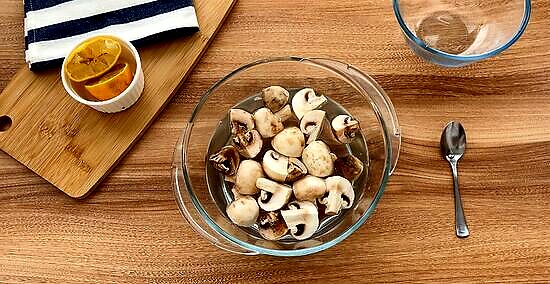
Place the mushrooms into a lemon juice solution for 5 minutes. Combine 1 teaspoon (4.9 mL) of lemon juice with 16 fluid ounces (470 mL) of water and stir it together. Then, place each mushroom into the solution and let them sit for 5 minutes. Pat them dry with a paper towel after you take them out. If you don’t mind the mushrooms darkening, skip this step. Treating the mushrooms with this solution will help them retain their color instead of darkening as they cook.
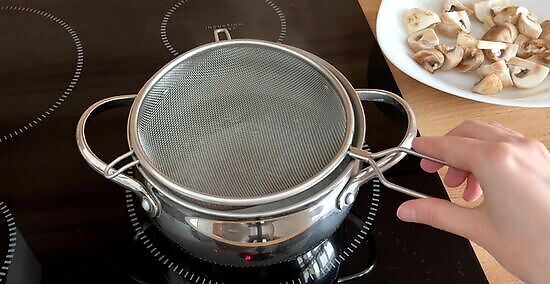
Bring 2 inches (5.1 cm) of water to a boil in a steamer pot with a basket. Fill the bottom of the steamer pot with 2 inches (5.1 cm) of water and bring it to a boil. Choose a steamer pot that has a lid for even and efficient steaming. Make sure the holes in the steamer basket aren’t so large that your mushroom pieces can fall through.

Put the mushrooms in the basket, lid the pot, and steam for 3 to 5 minutes. Around the 3 to 5-minute mark, poke the mushrooms with a fork to test for doneness. It should go all the way through but you should feel a little resistance from the meaty insides. The steaming time will depend on the size of the mushrooms. Slices and quarters will take about 3 minutes while whole mushrooms can take up to 5 minutes to steam all the way through.
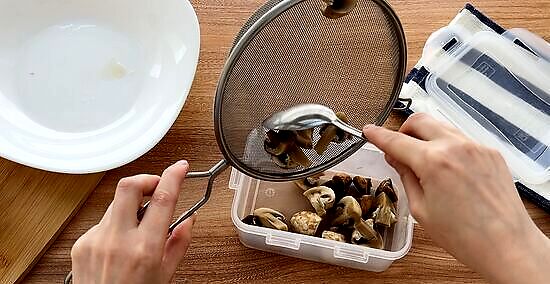
Transfer the mushrooms into a container. Choose a large plastic or freezer-safe glass container with a fitted lid. Leave about ⁄2 inch (1.3 cm) of headspace in the container. You can also use a plastic freezer bag to store the mushrooms.
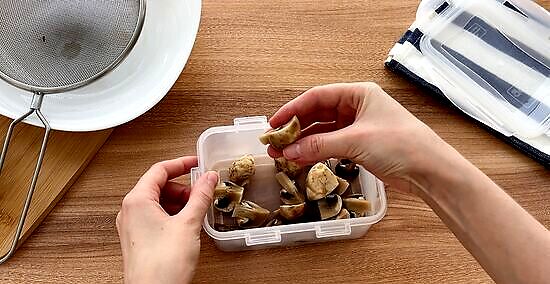
Allow the mushrooms to cool for 30 minutes to 1 hour. Let them cool off on the kitchen counter while you clean up the kitchen or do something else for a while. The mushrooms are ready for freezing when they’re cool to the touch. Cooling them is important before putting them in the freezer because the heat may cause other items in the freezer to partially thaw and refreeze.
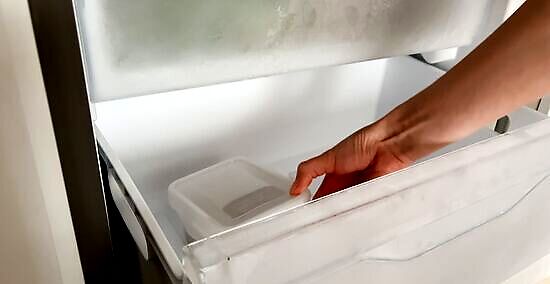
Store the container of mushrooms in your freezer for up to 1 year. Place the container toward the back of the freezer because that area experiences fewer temperature changes when the door is opened. They’ll keep for up to 1 year.
Frying and Freezing Mushrooms
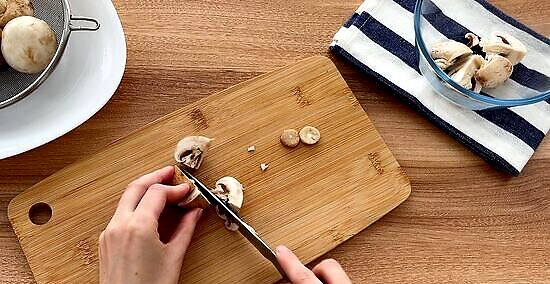
Clean and slice the mushrooms. Run the mushrooms under cool running water and use your rub away any dirt with your fingers. Slice the mushrooms into halves or quarters, or leave them whole if you like. Note that whole mushrooms are unlikely to cook evenly in a pan. Feel free to snap the stems off if you only want the tops, but you can saute, freeze, and eat the stems just the same.

Heat a large frying pan on medium to high heat with a fat source. Place 1 to 2 tablespoons (14.3 to 28.6 grams) of fat like butter or oil into an open frying pan and set the stove to medium to high heat. Let it heat up until the butter has fully melted or the oil starts to move freely around the pan. Use a heavy pan (like cast iron) to ensure even cooking.
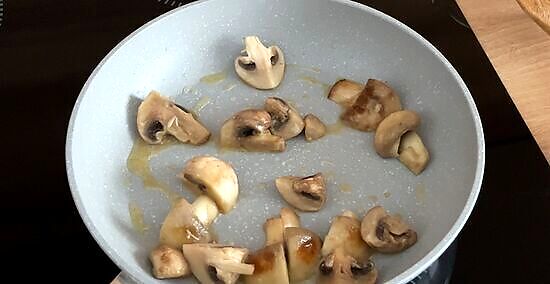
Cook the mushrooms for 3 to 5 minutes, stirring occasionally. Place the cleaned and sliced mushrooms into the pan and stir them around with a wooden spoon every 45 seconds so each one cooks evenly. Whole mushrooms will take 5 minutes to cook while quartered or slice mushrooms will take about 3 to 3 ½ minutes. You may need to add more butter or oil if you’re cooking a large batch. Add any spices that you may want to have on your mushrooms. Basil, oregano, rosemary and thyme are great options. Mushrooms with smaller heads (like enoki and lion’s mane) will only take up to 2 minutes. Oyster mushrooms and large strips of portobello caps might take up to 4 or 5 minutes.
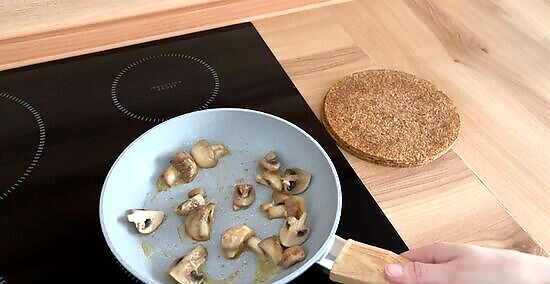
Remove the mushrooms from heat when they’re evenly browned. Once the mushrooms are fully cooked, spoon them into a bowl or onto a plate to allow them to cool. The mushrooms are fully cooked when they’re tender and all or most of the moisture from the pan has been absorbed.

Place the mushrooms in an airtight container. Choose a heavy-duty glass or plastic container to store the mushrooms. Make sure it’s large enough to fit all of the mushrooms while leaving ⁄2 inch (1.3 cm) of headspace at the top. The mushrooms will expand as they freeze, so be sure to leave room. If you don’t have a large enough container, use multiple small ones or a large plastic zipper bag.
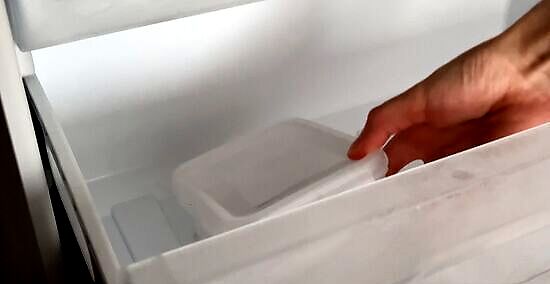
Store the mushrooms in the freezer for up to 9 months. Store the container toward the back of the freezer so they aren’t exposed to temperature changes when opening and closing the door. If you want to use your frozen mushrooms at or after the 9-month mark, let them thaw first. If you see a gooey film or squishy, slimy texture, they’ve gone bad.
Blanching and Freezing

Bring a large pot of water to a boil and add 2 tsp (8.4 g) of salt. Choose a pot large enough to accommodate all the mushrooms you plan to blanch. Putting a lid on the pot for this part will help the water boil faster. You don’t have to add salt, but it will help preserve their color and bring out their flavor.
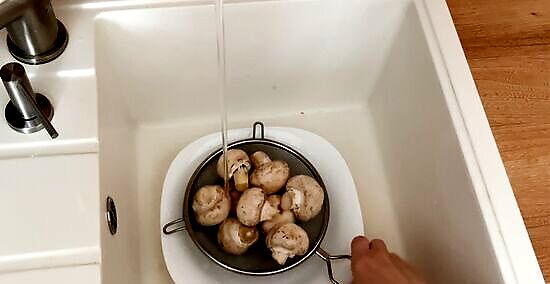
Wash the mushrooms under cool running water. Hold a few mushrooms in your hands or put them all in a colander to make it easier. Use your fingers, a mushroom brush, or a towel to wipe away any dirt lodged in small crevices. When washing portobello caps, snap off the stem first and scoop out the gills with a spoon. It may help to use a sieve to wash lion’s mane or enoki mushrooms because each individual cap is very slender and delicate.
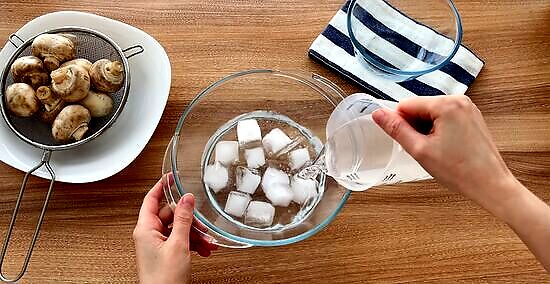
Prepare a large bowl with ice and water. Pour 2 cups (470 mL) to 4 cups (950 mL) of water into a large mixing bowl with 1 cup (220 grams) to 2 cups (440 grams) of ice. The amount of water and ice you’ll need depends on how many mushrooms you’re cooking. If you’re cooking 1 cup (220 grams) of mushrooms, you’ll only need 2 cups (470 mL) of water and 1 cup (220 grams) of ice. You’ll need to place the vegetables into cold water immediately after boiling, so it’s wise to prepare the ice bath ahead of time.

Cut the mushrooms into quarters or slices, if desired. Use a sharp chef’s knife to slice the mushrooms into your desired shape. To slice them into quarters, cut each mushroom in half and then in half again (cutting in the shape of an “x” on the top). To make slices, cut the mushrooms vertically from one side to the other. Try to keep all of the mushroom slices and quarters about the same size so they cook evenly.
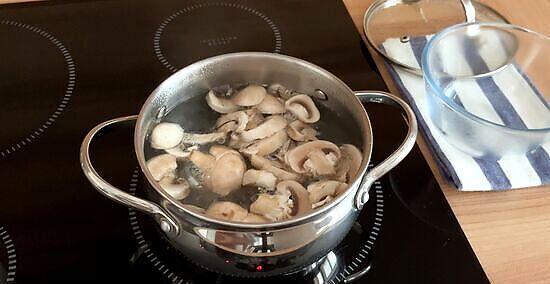
Plunge the mushrooms into boiling water for about 2 minutes. After the water has come to a bubbling, rolling boil, place the mushrooms into the pot. Allow them to cook for about 2 minutes.
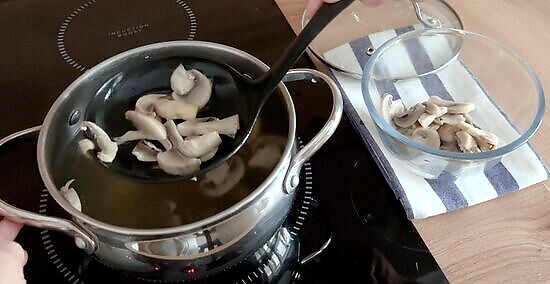
Pour the water and mushrooms over a colander in the sink. To separate the mushrooms from the boiling water, place a colander or standing sieve into the sink and pour the water and mushrooms over it. Be careful not to splash any boiling water onto your skin! If you don’t have a colander or standing sieve, you can also use a slotted spoon to lift the mushrooms out of the pot a few at a time and plop them into the ice bath.
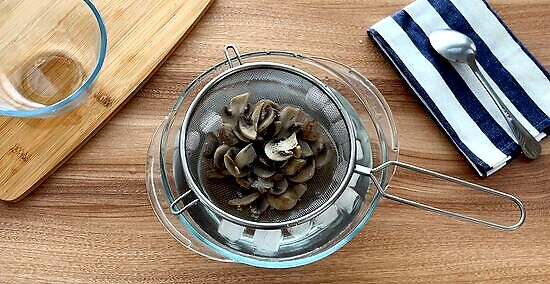
Plunge the mushrooms into the ice water bath for 3 to 5 minutes. Lift the colander out of the sink and pour the mushrooms into the ice bath as soon as you can. Let them sit in the ice water for 3 to 5 minutes or until they’ve cooled completely. Make sure there’s enough water to cover all of the mushrooms. If necessary, add some more water and a few ice cubes. You can also use tongs or a spoon to drop the mushrooms into the ice bath.
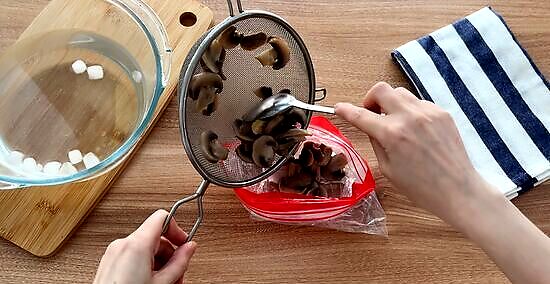
Transfer the cooled mushrooms into a large freezer container. Wait until the mushrooms are cool to the touch before transferring them into a freezer-safe container with a lid. Leave ⁄2 inch (1.3 cm) of headspace because they’ll expand a little as they freeze. You can also use a plastic freezer bag to store the mushrooms. Just try to squeeze out most of the air from the bag before you seal it.
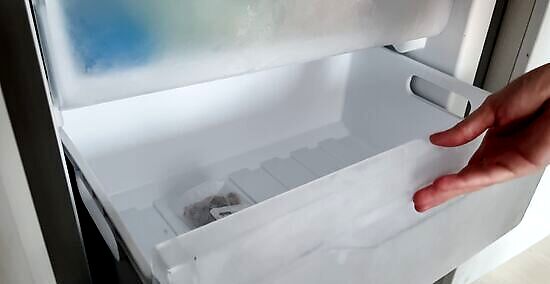
Store the container of mushrooms in the back of your freezer. The back of the freezer experiences fewer temperature changes when the door is opened, so it’s a good spot to store your mushrooms long-term. They’ll keep for up to 1 year. To defrost the mushrooms, store them in the refrigerator for 6 to 7 hours. Cook with frozen mushrooms just like you would any other frozen vegetable.
Pickling Mushrooms
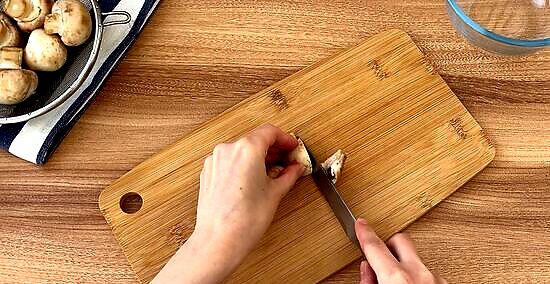
Wash the mushrooms under cool water and slice them, if necessary. Hold the mushrooms under cool running water and gently massage away any dirt and debris. Leave them whole or slice larger mushrooms into quarters and smaller ones into halves. Cremini mushrooms are often small enough to be pickled whole, but larger button and portobello mushrooms may need to be sliced. Morel mushrooms are best pickled whole.
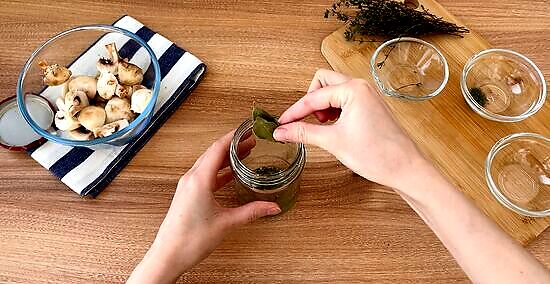
Place any fresh herbs into a 1 quart (1 liter) mason jar. Thick mason jars (like Ball or Kerr jars) are best for pickling because the glass can withstand extreme temperature changes. Make sure the jar has a lid that’s airtight. If you’ve previously purchased pickles in one of these types of jars, feel free to reuse it—just wash it well. Herbs that work well for pickled mushrooms are: Thyme Bay leaves Rosemary Oregano Dill
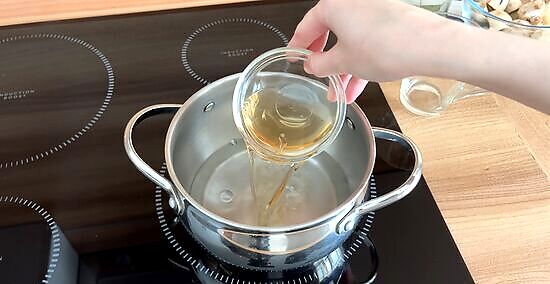
Pour water and vinegar into a non-reactive saucepan. Pour ⁄4 cup (180 mL) of water, ⁄3 cup (79 mL) of white wine vinegar into a saucepan. These liquid ingredients will be the base of the pickling brine. Be sure to use a non-reactive saucepan made from stainless steel, ceramic, glass and metal cookware. Avoid aluminum, cast iron, and copper pans because these will release a metallic taste after coming in contact with vinegar.
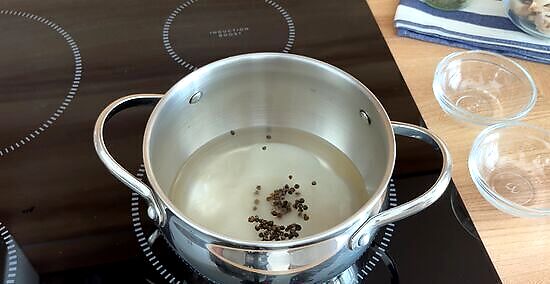
Add salt, pepper, and any spices you like to the brine. Add 1 tbsp (14.3 g) of salt, 1 tbsp (14.3 g) of black peppercorns, and any other spices to the brine. For instance, spoon in 1 ½ tsp (7.5 g) of whole allspice for an earthy flavor or 1 ½ (14.3 g) of mustard seed for a bright, zesty kick. Toss in any other ingredients that you’d like to complement the flavor of the mushrooms. Thinly slice garlic, shallots, or spring onions are great options.

Place the mushrooms into the brine and bring it to a boil. Put your whole or sliced mushrooms into the saucepan along with the other ingredients and set the stove to high heat. Bring it just to a boil, which should take about 3 to 4 minutes. Whole morel mushrooms might take up to 5 minutes to properly cook. Lion’s mane and enoki mushrooms will cook in up to 2 or 3 minutes, so watch them carefully—overcooking will cause the pickles to be limp and mushy.
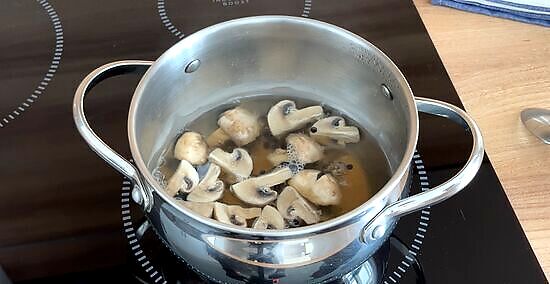
Reduce the heat and let the mushrooms simmer for 15 minutes. Once the brine comes to a full boil, reduce the heat to medium (or medium-low) and let the mixture simmer for about 15 minutes. Make sure it’s a simmer and not a boil—you should see small bubbles floating from the base of the pot and occasionally breaking the surface. If you have a kitchen thermometer, the mixture should be about 180°F (82°C) to 190°F (87°C). If you’re using a lower heat setting, rest a pot lid over half of the saucepan to hold a simmer.
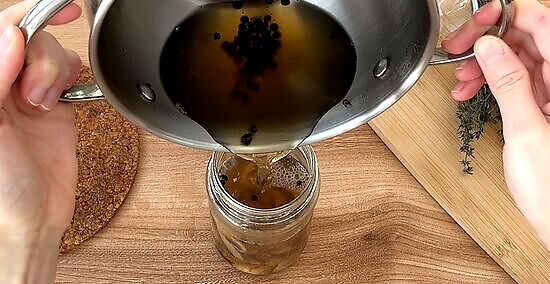
Remove the mixture from the stove and pour it into the pickling jar. Use both hands to lift the saucepan and slowly pour the brine and mushrooms into the jar. You may want to use a slotted spoon to transfer the mushrooms into the jar to avoid splashing. Use a spoon to gather up any herbs left in the bottom of the pan and put them into the jar.
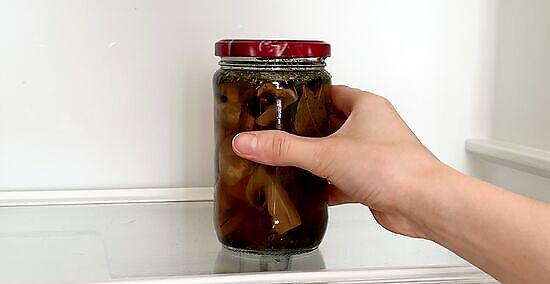
Let the mixture cool before capping and refrigerating the jar. Wait anywhere from 30 minutes to 1 hour for the mixture to cool. Then, cap the jar with an airtight lid and place it in the refrigerator. They’ll be ready to enjoy in 3 days! Quick-pickled mushrooms will stay good in the refrigerator for up to 1 month.
Drying Mushrooms
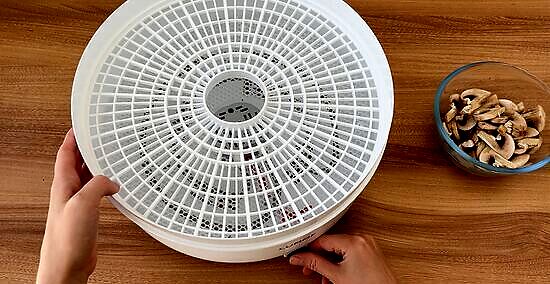
Preheat your dehydrator to 110°F (43°C). Dehydrating mushrooms using low heat is the best way to preserve their earthy, umami flavor. It can take anywhere from 3 to 7 hours. You can crank the heat up to 115°F (56°C) if you want them to dry a little faster. Using too much heat can cause the mushrooms to lose their flavor.
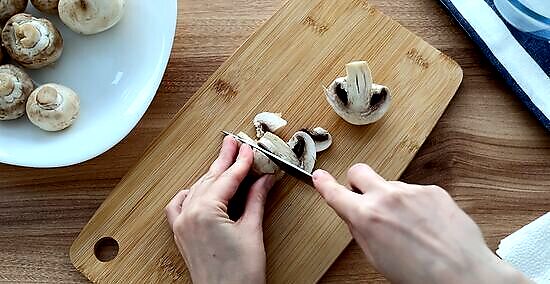
Wash and slice the mushrooms into slivers ⁄4 in (0.64 cm) to ⁄2 in (1.3 cm) thick. Wash the mushrooms under cool running water. Make sure to rub away any bits of dirt or debris on the entire surface of the mushroom. Pat the mushrooms dry with a paper towel and slice them into even pieces about ⁄4 inch (0.64 cm) to ⁄2 inch (1.3 cm) thick. Cut them as evenly as you can because thinner slices will take less time to dry while thicker ones will take more time. If you’re drying portobello caps, discard the stems, scoop out the gills with a spoon, and wash both sides of the cap very well. You may need to rewash the mushrooms if you discover bits of dirt stuck under the caps after slicing them. Remember to pat them dry again!
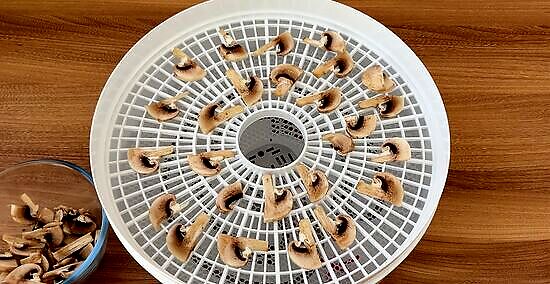
Place the mushroom slices onto the dehydrator trays. Since it’s hard to slice some types of mushrooms into even slivers, try to put slices that are similar in size onto the same tray. That way, if some of the smaller pieces dry faster, you can just remove that tray instead of picking through the whole batch.
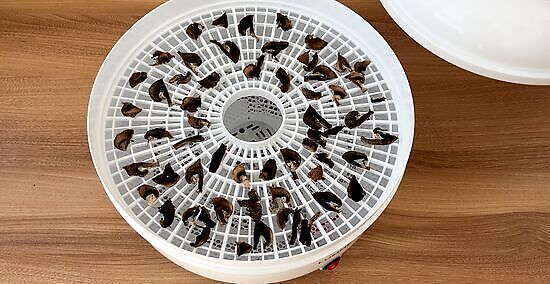
Check for dryness after for 3 hours and each hour after that. After about 3 hours, open the door of the dehydrator and check the pieces for dryness. They should feel crispy and snap apart when you try to bend them with your fingers. If they’re not dry yet, wait another hour before checking again. If some of the mushrooms are dry at the 3 or 4 hour mark, take them out and let the others dry for longer (up to 7 hours). Smaller strings of of enoki and lion’s mane mushrooms will only take 2 to 3 hours, so check on them sooner and more often.
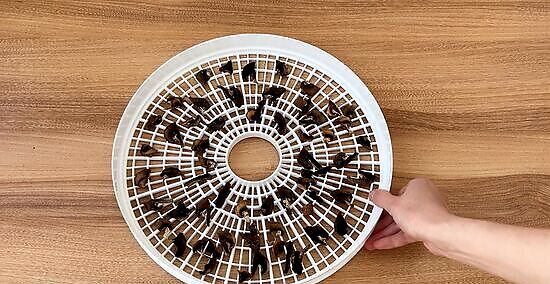
Remove the dried mushrooms from the dehydrator and let them cool. Once all of the mushrooms are crispy, slide the trays out of the dehydrator and let them cool on the countertop for 1 hour or until they’re completely cool to the touch. If you notice that some of the mushrooms still seem moist or are able to bend, place those onto a different dehydrating tray and continue to dry them.
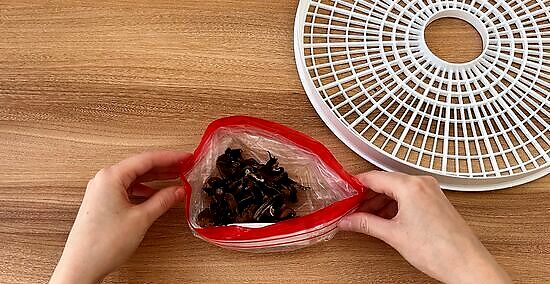
Store the dried mushrooms in an airtight container. Storing the mushrooms in glass jars with airtight lids is a good option, but you can also store them in airtight zipper bags. Place the vessel in a cool, dark place and they’ll stay good for 6 months to 1 year. To rehydrate them, pour boiling water over the mushrooms and let them soak for 20 to 30 minutes. Use dried mushrooms to flavor soups and sauces. Dried mushrooms are no longer effective when they lose their scent (typically after 1 year).



















Comments
0 comment